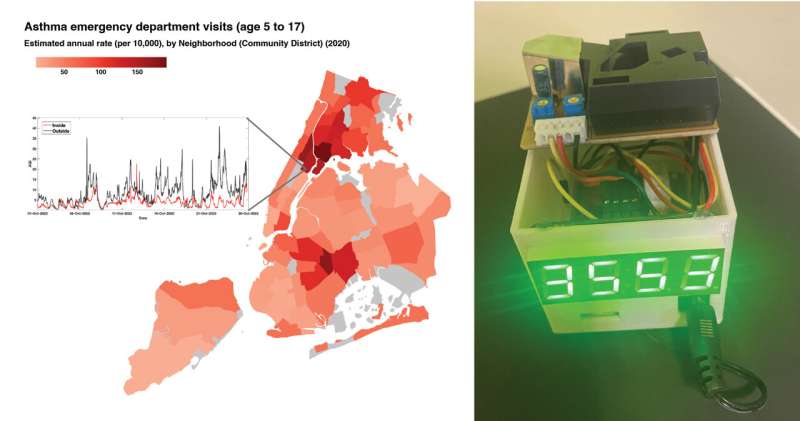
Climate change is one of the biggest issues of the 21st century, a crisis that affects the fate of the entire world as well as our place in it. A warming Earth will destroy ecosystems, flood cities, and lead to countless suffering and death for people worldwide. Part of the challenge of dealing with climate change is helping people understand its complex impacts.
In The Physics Teacher journal, researchers from Fordham University partnered with middle and high schools in the Bronx and Manhattan in a citizen science project to collect real-time air quality data. Their project, Fordham Regional Environmental Sensor for Healthy Air (FRESH Air), seeks to improve air quality data while educating the community about the effects of climate change.
The researchers supplied students with commercial air quality sensors and kits to build their own, which collected indoor and outdoor air pollution measurements at their schools. In the process, those students learned about one of the most immediate effects of climate change.
“We identified asthma, especially childhood asthma, as being a major concern among members of the Bronx community,” said author Stephen Holler. “Respiratory diseases like asthma have a strong connection to air quality, which is negatively impacted by the changing climate. This became the focal point for the project: to educate the Bronx community about climate change through the negative impacts of air quality that are adversely affecting them on a daily basis.”
Thanks to the air quality sensors and the data they produced, students could draw connections between the quality of their air and the health of their planet.
“In June 2023, the students witnessed an orange haze over New York City due to extensive wildfires in eastern Canada, which were a consequence of the warming climate,” said Holler. “This provided a first-hand experience of the connection between the changing climate and the air they breathe.”
The data collected thanks to FRESH Air has revealed more than just impacts from climate change. This study also highlighted disparities between schools in low-income and high-income communities.
“As we partner with the schools and community organizations, we are getting a picture of the asymmetric distribution of pollution,” said Holler. “At some locations, indoor air quality closely tracks outdoor air quality, indicating that some schools are ‘leaky’ and not filtering out particulate matter, exposing students and staff to potential respiratory and cardiovascular disease.”
Ultimately, the researchers at Fordham hope to inspire more students to develop an interest in science.
“The citizen science aspect of the project enables the students and communities to feel they are part of a scientific endeavor and one that has a direct impact on their lives,” said Holler. “Many people do not understand that the scientific process is fundamentally a shared experience. As one of my colleagues is fond of saying, ‘Science is something we do all together.'”
More information:
Project FRESH Air: A community engagement project about health and climate, The Physics Teacher (2024). DOI: 10.1119/5.0136945
Citation:
Pollution-tracking citizen science project offers New York students a breath of fresh air (2024, January 4)
retrieved 5 January 2024
from https://phys.org/news/2024-01-pollution-tracking-citizen-science-york.html
This document is subject to copyright. Apart from any fair dealing for the purpose of private study or research, no
part may be reproduced without the written permission. The content is provided for information purposes only.
